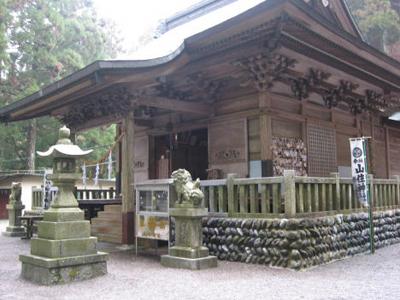|
Katte Shrine located in Yoshinoyama, Yoshino-cho, Nara Pref. is one of the eight Myojin shrines in Yoshino. It enshrines Oyama Tsumi no Kami and Konohanasakuya-hime no Mikoto. Legend has it that in 672, when Prince Oama (later enthroned as Emperor Tenmu), who had stayed in Yoshino and gathered an army to battle with the crown prince, was playing the Japanese harp in front of the hall at this temple, a heavenly maiden appeared and showed him a lucky omen.
It is also said that in 1185, when Shizuka Gozen, who parted with Minamoto no Yoshitsune in Mt. Yoshino, was caught by the pursuers, she performed elegant dance in front of the hall at this shrine to make time for her husband to escape.
The main hall was once destroyed by fire and restored in 1776, but in 2005 it was burned down again by the fire of suspicious origin. Presently, only a part of wooden structure remains and there is little possibility of the restoration of this important cultural property.
It is also said that in 1185, when Shizuka Gozen, who parted with Minamoto no Yoshitsune in Mt. Yoshino, was caught by the pursuers, she performed elegant dance in front of the hall at this shrine to make time for her husband to escape.
The main hall was once destroyed by fire and restored in 1776, but in 2005 it was burned down again by the fire of suspicious origin. Presently, only a part of wooden structure remains and there is little possibility of the restoration of this important cultural property.
| [+ADDRESS] | 
|
















